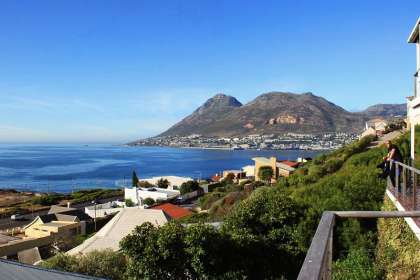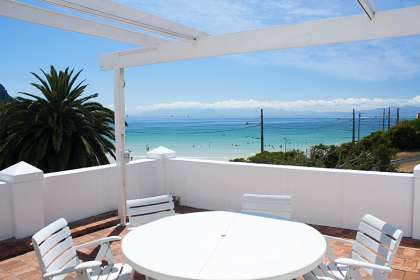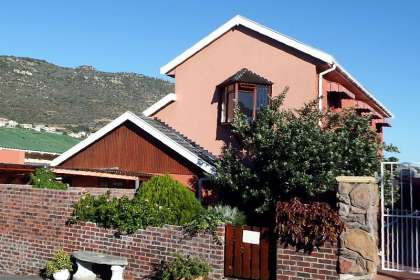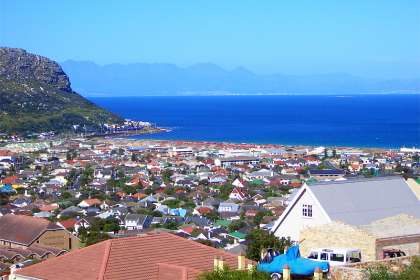Cape Point Nature Reserve - Cape of Good Hope
- Smitswinkel Bay (8.90km)
- Castle Rock (11.07km)
- Murdock Valley (14.39km)
- Froggy Farm (14.71km)
- Winford (15.10km)
- Bellvue (15.47km)
- Boulders (15.59km)
- Seaforth (15.68km)
- Harbour Heights (16.18km)
- Simons Kloof (16.37km)
- Simon's Town (16.47km)
- Cape Peninsula (16.71km)
- Mount Pleasant (16.83km)
- Redhill (16.93km)
- Bayview Heights (17.75km)
- Flying Dutchman Funicular - Cape Point (0.47km)
- Diaz Beach, Cape Point (0.54km)
- Cape of Good Hope Old Lighthouse (0.56km)
- Cape Point Lighthouse - Cape Peninsula (1.29km)
- Cape Point - Cape Town, Western Cape (1.33km)
- Maclear Beach - Cape Point Nature Reserve, Cape Town (1.36km)
- Platboom Beach - Cape Point, Cape Town (3.82km)
- Buffels Bay Beach and Tidal Pool - Cape Point (3.98km)
- Gifkommetjie Trail - Cape Peninsula (7.31km)
- Smitswinkel Bay Beach - Cape Town (8.78km)
- Partridge Point - Cape Peninsula, Cape Town (9.65km)
- Cape Point Ostrich Farm - Cape Peninsula (10.36km)
- Miller's Point Tidal Pool - Cape Peninsula, Cape Town (11.99km)
- Cape Peninsula National Park - Cape Town (12.22km)
- Olifantsbos Beach - Cape Peninsula, Cape Town (13.86km)
- Fisherman's Beach - Simon's Town, Cape Town (14.98km)
- Windmill Beach - Simon's Town, Cape Town (15.24km)
- Simon's Town Country Club - Cape Town (15.29km)
- Boulders Beach Penguin Colony - Simon's Town (15.90km)
- Seaforth Beach - Simon's Town, Cape Town (16.18km)
- Heritage Museum - Simon's Town, Cape Town (16.56km)
- Just Nuisance Memorial - Simon's Town, Cape Town (16.62km)
- Simon's Town Waterfront - Cape Town (16.64km)
- Heather Auer Art and Sculpture Gallery - Simon's Town (16.65km)
- South African Navy Festival - Simon's Town, Cape Town (16.66km)
- False Bay Yacht Harbour - Simon's Town, Cape Town (16.80km)
- South African Naval Museum - Simon's Town, Cape Town (16.89km)
- SAS Assegaai Museum - Simon's Town, Cape Town (16.89km)
- Simon's Town Museum - Cape Town (16.97km)
- Simon's Town Harbour - Cape Town (17.13km)
 Contrary to popular belief, the Cape of Good Hope is not the southernmost point of Africa. (Image adapted). © Amber Wanderlust – Travel Writing and Photography
Contrary to popular belief, the Cape of Good Hope is not the southernmost point of Africa. (Image adapted). © Amber Wanderlust – Travel Writing and Photography At the tip of the Cape Peninsula 60 km south-west of Cape Town, lies Cape Point, a nature reserve within the Table Mountain National Park; a declared Natural World Heritage Site. © Marti Swart
,
License
At the tip of the Cape Peninsula 60 km south-west of Cape Town, lies Cape Point, a nature reserve within the Table Mountain National Park; a declared Natural World Heritage Site. © Marti Swart
,
LicenseCape Point Nature Reserve - Cape of Good Hope
When Bartolomeu Dias first sailed past the Cape in 1488 - no doubt cursing through his teeth - he named the area the Cape of Storms. The gale force winds that frequently blow across the peninsula were also the inspiration for the legend of the Flying Dutchman. But it was later renamed the Cape of Good Hope, as it represented a gateway to the trade routes of the East.
The lighthouse at Cape Point is a mandatory stop for any bus tour that circumnavigates the Cape Peninsula. But if you have more time, you may wish to explore the beaches and tidal pools that can be found along it's rocky shoreline. Venus Pool on the False Bay side is a pleasant location for swimming or fishing. Anglers may obtain fishing permits at the gates.
The Buffelsfontein Visitor Centre has audiovisual presentations and interesting artefacts that shed light upon the Cape's cultural and natural history.
The Cape Point Nature Reserve has now been incorporated into the much larger Table Mountain National Park, which has been proclaimed by UNESCO as a Natural World Heritage Site.
Five interesting facts about the Cape of Good Hope:
1. Historical Significance: The Cape of Good Hope is historically significant as a key milestone for sailors during the Age of Exploration. It was first rounded by the Portuguese explorer Bartolomeu Dias in 1488, marking the opening of the sea route to India and the East.
2. Geographical Misconception: Contrary to popular belief, the Cape of Good Hope is not the southernmost point of Africa. That title belongs to Cape Agulhas, located about 150 kilometers southeast. However, the Cape of Good Hope is often mistakenly thought to be the meeting point of the Atlantic and Indian Oceans.
3. Diverse Flora and Fauna: The Cape is part of the Cape Floristic Region, a biodiversity hotspot and UNESCO World Heritage Site. It is home to unique plant species such as fynbos, as well as various animals, including baboons, ostriches, and antelope.
4. Scenic Beauty: The Cape of Good Hope offers stunning coastal scenery with dramatic cliffs, rugged landscapes, and pristine beaches. It is a major tourist attraction within the Table Mountain National Park, known for its picturesque views and hiking trails.
5. Marine Life: The waters around the Cape of Good Hope are rich in marine life, including seals, dolphins, and whales. The nutrient-rich currents support diverse underwater ecosystems, making it a significant area for marine biodiversity.
Verblyf Naby Cape Point Nature Reserve - Cape of Good Hope
Aqua Terra Boutique Guesthouse
Bed & Breakfast Accommodation in Simon's Town
13.7km from Cape Point Nature Reserve - Cape of Good HopeAqua Terra Boutique Guesthouse is in die stil woonbuurt Murdockvallei in Simonstad geleë en bied verblyf op 'n B&B-basis. …sien meer vir besprekings / navrae en inligting.
Boulders Beach Hotel, Cafe and Curios
Self Catering Apartment, Flatlet Accommodation in Boulders
15.6km from Cape Point Nature Reserve - Cape of Good HopeBoulders Beach Hotel is Boulders, Simon's Town is net 70 meter van die Wêrelderfenisgebied van Boulders Beach geleë wat bekend is vir sy broeiende Afrika-pikkewynkolonie. Dit is een van die 'moet sien'-aanbevelings vir toeriste wat Kaapstad... …sien meer vir besprekings / navrae en inligting.
Mariner Guesthouse
Bed & Breakfast Accommodation in Simon's Town
16.1km from Cape Point Nature Reserve - Cape of Good HopeDie bekroonde Mariner Guesthouse is op maat gebou teen die berghelling in die historiese Simonstad en bied asemrowende see-uitsigte oor Valsbaai. Ons is stapafstand van restaurante en strande af, en is trots daarop om styl... …sien meer vir besprekings / navrae en inligting.
Bay Splendour
Self Catering House, Cottage, Chalet Accommodation in Simon's Town
18km from Cape Point Nature Reserve - Cape of Good HopeBay Splendour, geleë in 'n doodloopstraat, 10 minute se stap na die outydse sjarme van Simonstad, die hoofkwartier van die Suid-Afrikaanse Vloot. 'n Kusjuweel van vrede en rustigheid. Bay Splendour het 'n ruim, oopplan woonkamer en kombuis... …sien meer vir besprekings / navrae en inligting.
Atlantic Dream Beachfront Villa
Self Catering House, Cottage, Chalet Accommodation in Scarborough
19.1km from Cape Point Nature Reserve - Cape of Good HopeHierdie luukse dubbelverdieping-strandfrontvilla in Scarborough (slaapplek vir 8) bied privaatheid, skoonheid en sekuriteit. As jy op soek is na 'n veilige en rustige strandtoevlugsoord binne maklike bereik van die Cape Town Buzz, moet dit nie hier misloo …sien meer vir besprekings / navrae en inligting.
Moonglow Guest House
Bed & Breakfast Accommodation in Simon's Town
19.5km from Cape Point Nature Reserve - Cape of Good HopeMoonglow Guest House bied B&B-verblyf in Glencairn, teen die hange van die Simonstad-berge wat uitkyk oor Valsbaai. Daar is 6 goed ingerigte ensuite-slaapkamers, almal met see-uitsigte. 4 kamers het koninginbeddens en al die kamers het... …sien meer vir besprekings / navrae en inligting.
The Crags
Self Catering Apartment, Flatlet Accommodation in Fish Hoek
21.6km from Cape Point Nature Reserve - Cape of Good HopeKom bly in een van die oorspronklike plaasgeboue in Vishoek, Kaapstad binne 'n hanetreetjie van die strand af. Hierdie selfsorgwoonstel (slaapplek vir 6) bied ruim, goed ingerigte, luukse akkommodasie met manjifieke uitsigte oor Valsbaai. …sien meer vir besprekings / navrae en inligting.
A Tuscan Villa Guest House
Bed & Breakfast Accommodation in Fish Hoek
21.9km from Cape Point Nature Reserve - Cape of Good HopeBed en ontbyt akkommodasie in Vishoek, Kaapstad. Die villa spog met 4 ruim en suite-kamers wat benoem is volgens die rigting wat hulle in die gesig staar. Terwyl elke kamer sy eie spesiale eienskappe het, het alle kamers Posturepedic-beddens, 100% perkall …sien meer vir besprekings / navrae en inligting.
Upstairs @ No. 42
Self Catering Apartment, Flatlet Accommodation in Fish Hoek
22.1km from Cape Point Nature Reserve - Cape of Good HopeNet 'n paar treë vanaf die afdak (terrein parkering) neem u na die deur van hierdie "Tuis van huis", met slaaplek vir 6. Die woonstel het 'n oopplan woon/eet/kombuis-gebied, 'n badkamer met bad en stort, 'n slaapkamer met 2 kajuitbeddens (volgrootte) …sien meer vir besprekings / navrae en inligting.
A Place In Thyme
Self Catering House, Cottage, Chalet Accommodation in Fish Hoek
22.6km from Cape Point Nature Reserve - Cape of Good HopeA Place in Thyme is teen die berghang in Vishoek geleë en bied verblyf in drie afsonderlike eenhede: die kothuis (slaapplek vir 5); Klein tiemie (slaap 2) en groot tiemie (slaapplek vir 2 volwassenes en 2 kinders; of 3 volwassenes.) …sien meer vir besprekings / navrae en inligting.
- Smitswinkel Bay (8.90km)
- Castle Rock (11.07km)
- Murdock Valley (14.39km)
- Froggy Farm (14.71km)
- Winford (15.10km)
- Bellvue (15.47km)
- Boulders (15.59km)
- Seaforth (15.68km)
- Harbour Heights (16.18km)
- Simons Kloof (16.37km)
- Simon's Town (16.47km)
- Cape Peninsula (16.71km)
- Mount Pleasant (16.83km)
- Redhill (16.93km)
- Bayview Heights (17.75km)
- Flying Dutchman Funicular - Cape Point (0.47km)
- Diaz Beach, Cape Point (0.54km)
- Cape of Good Hope Old Lighthouse (0.56km)
- Cape Point Lighthouse - Cape Peninsula (1.29km)
- Cape Point - Cape Town, Western Cape (1.33km)
- Maclear Beach - Cape Point Nature Reserve, Cape Town (1.36km)
- Platboom Beach - Cape Point, Cape Town (3.82km)
- Buffels Bay Beach and Tidal Pool - Cape Point (3.98km)
- Gifkommetjie Trail - Cape Peninsula (7.31km)
- Smitswinkel Bay Beach - Cape Town (8.78km)
- Partridge Point - Cape Peninsula, Cape Town (9.65km)
- Cape Point Ostrich Farm - Cape Peninsula (10.36km)
- Miller's Point Tidal Pool - Cape Peninsula, Cape Town (11.99km)
- Cape Peninsula National Park - Cape Town (12.22km)
- Olifantsbos Beach - Cape Peninsula, Cape Town (13.86km)
- Fisherman's Beach - Simon's Town, Cape Town (14.98km)
- Windmill Beach - Simon's Town, Cape Town (15.24km)
- Simon's Town Country Club - Cape Town (15.29km)
- Boulders Beach Penguin Colony - Simon's Town (15.90km)
- Seaforth Beach - Simon's Town, Cape Town (16.18km)
- Heritage Museum - Simon's Town, Cape Town (16.56km)
- Just Nuisance Memorial - Simon's Town, Cape Town (16.62km)
- Simon's Town Waterfront - Cape Town (16.64km)
- Heather Auer Art and Sculpture Gallery - Simon's Town (16.65km)
- South African Navy Festival - Simon's Town, Cape Town (16.66km)
- False Bay Yacht Harbour - Simon's Town, Cape Town (16.80km)
- South African Naval Museum - Simon's Town, Cape Town (16.89km)
- SAS Assegaai Museum - Simon's Town, Cape Town (16.89km)
- Simon's Town Museum - Cape Town (16.97km)
- Simon's Town Harbour - Cape Town (17.13km)












